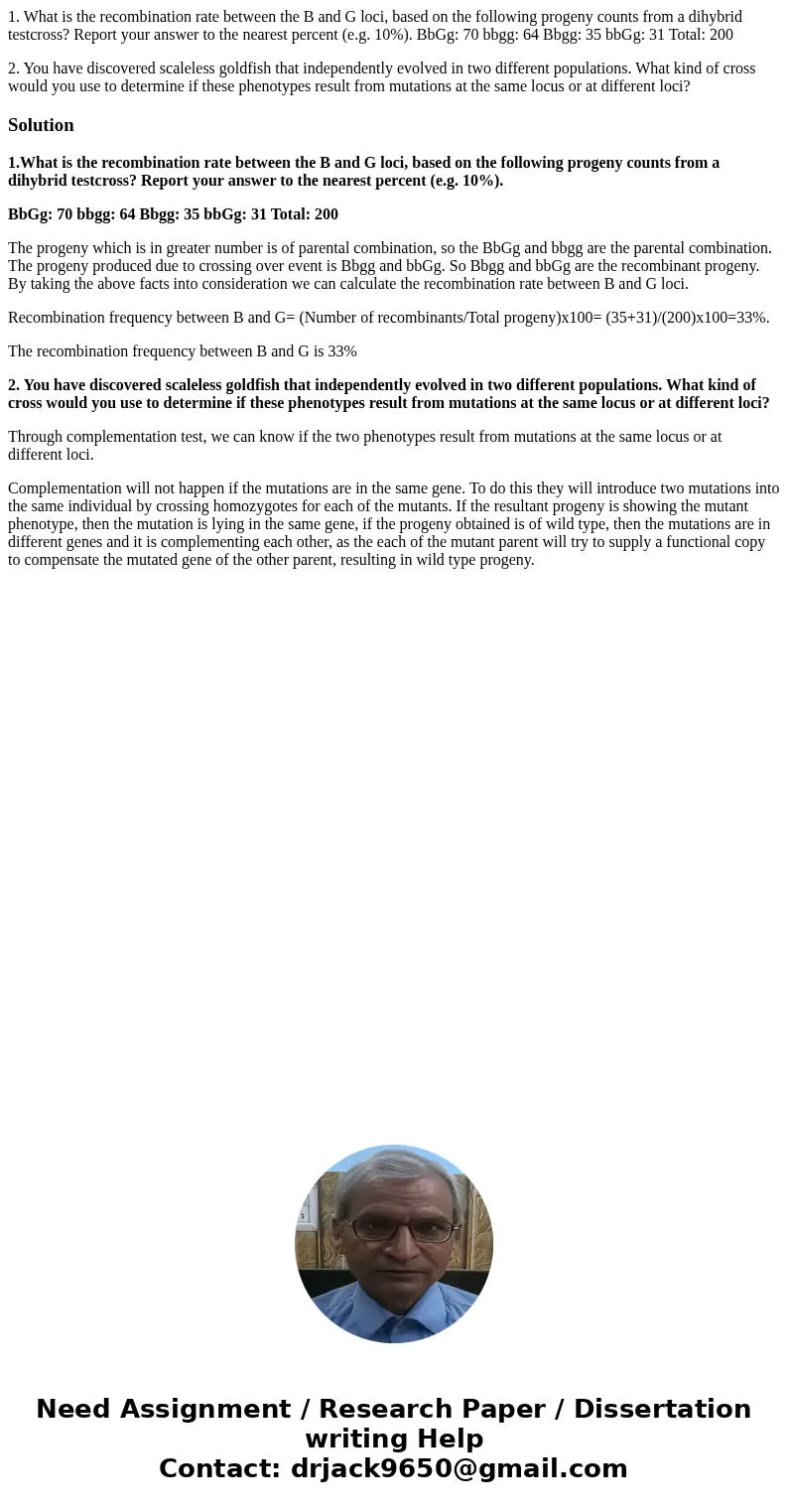1 What is the recombination rate between the B and G loci ba
1. What is the recombination rate between the B and G loci, based on the following progeny counts from a dihybrid testcross? Report your answer to the nearest percent (e.g. 10%). BbGg: 70 bbgg: 64 Bbgg: 35 bbGg: 31 Total: 200
2. You have discovered scaleless goldfish that independently evolved in two different populations. What kind of cross would you use to determine if these phenotypes result from mutations at the same locus or at different loci?
Solution
1.What is the recombination rate between the B and G loci, based on the following progeny counts from a dihybrid testcross? Report your answer to the nearest percent (e.g. 10%).
BbGg: 70 bbgg: 64 Bbgg: 35 bbGg: 31 Total: 200
The progeny which is in greater number is of parental combination, so the BbGg and bbgg are the parental combination. The progeny produced due to crossing over event is Bbgg and bbGg. So Bbgg and bbGg are the recombinant progeny. By taking the above facts into consideration we can calculate the recombination rate between B and G loci.
Recombination frequency between B and G= (Number of recombinants/Total progeny)x100= (35+31)/(200)x100=33%.
The recombination frequency between B and G is 33%
2. You have discovered scaleless goldfish that independently evolved in two different populations. What kind of cross would you use to determine if these phenotypes result from mutations at the same locus or at different loci?
Through complementation test, we can know if the two phenotypes result from mutations at the same locus or at different loci.
Complementation will not happen if the mutations are in the same gene. To do this they will introduce two mutations into the same individual by crossing homozygotes for each of the mutants. If the resultant progeny is showing the mutant phenotype, then the mutation is lying in the same gene, if the progeny obtained is of wild type, then the mutations are in different genes and it is complementing each other, as the each of the mutant parent will try to supply a functional copy to compensate the mutated gene of the other parent, resulting in wild type progeny.

 Homework Sourse
Homework Sourse